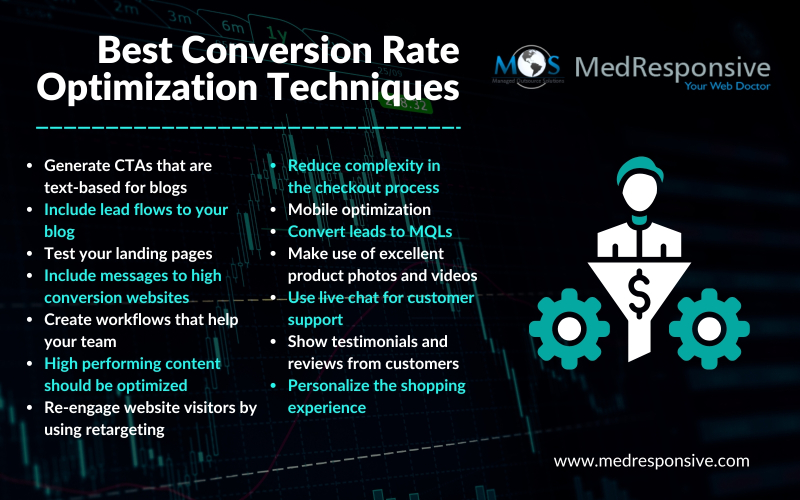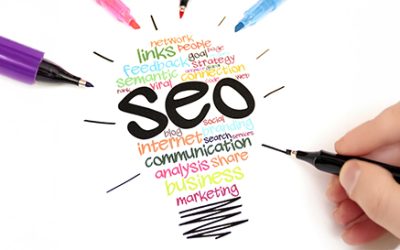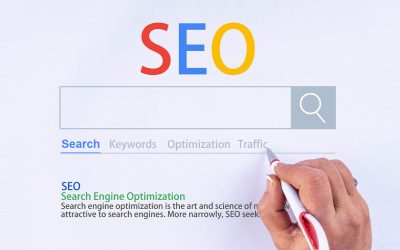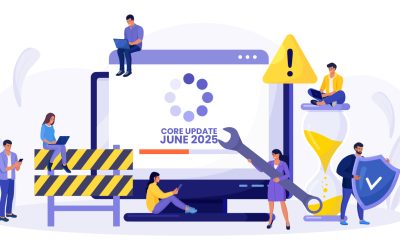Businesses face the challenge of not just gaining website visitors but also turning them into customers in today’s competitive online environment. This is where conversion rate optimization (CRO) becomes relevant. CRO is a tactical strategy that enables companies to maximize the potential of their websites and increase the rate at which visitors complete the desired actions. Businesses can adopt the ideal CRO approach by investing in reliable organic SEO services, which focus on enhancing user experience, optimizing design aspects, and utilizing data-driven insights.
What Do You Mean by Conversion Rate?
Conversion rate signifies the proportion of site visitors that carry out a desired action, such as filling out a web form, signing up for a service, or making a purchase. A high conversion rate indicates that your website is enticing to your target demographic, efficiently formatted, and well-designed. A low conversion rate could be caused by a number of elements that affect the functionality or aesthetics of a website. Poor conversion rates are frequently caused by lengthy load times, malfunctioning forms, or text that fails to sell the offer.
A “good” conversion rate depends on your specialty, objectives, traffic source, and audience demographics, among other things. 2.3% of visits to e-commerce websites in the United States during the second quarter of 2022 resulted in purchases. However, conversion rates for internet shoppers increased to above 4% in Great Britain. It’s time to optimize if your conversion rate is lower than you’d like – if it’s lower than the industry average, lower than your top competitors, or simply failing according to your own goals.
Significance of Conversion Rate Optimization
By maximizing conversion rates, you may increase the utility of your current users and visitors while reducing the cost of client acquisition. You can boost revenue per visitor, attract more clients, and expand your business by optimizing your conversion rate. A landing page will produce 200 conversions per month, for instance, if it receives 2000 visitors per month and has a conversion rate of 10%. The number of conversions created increases by 50% to 300 per month if the conversion rate can be raised to 15% by optimizing various page elements.
When it comes to boosting conversions, there is always space for improvement, and the greatest businesses are always refining and enhancing their websites and mobile applications to enhance user experience and boost conversions.
Conversion Rate Optimization Strategies
- Generate CTAs that are text-based for blogs: Although adding CTAs to blog posts is generally regarded as a great practice, they occasionally fall short of persuading readers to follow your preferred course of action. Banner blindness is a true phenomenon caused by people getting used to ignoring content that looks like a banner on websites. A different strategy is needed because of this lack of focus and the fact that website users often glance through the content rather than read a post from top to bottom. Test whether text-based CTAs, which are solitary lines of text that link to landing pages and are styled as an H3 or an H4, would increase conversion compared to standard CTAs that are found at the bottom of a website. In HubSpot’s small test of 10 blog articles, end-of-post banner CTAs typically contributed to just 6% of the leads that the blog posts produced, but the anchor-text CTA alone accounted for up to 93% of a post’s leads.
- Include lead flows to your blog: Another component of conversion rate optimization you may use on your website is a lead flow. High-converting pop-ups called lead flows are made to grab attention and provide value. Depending on your offer, you can choose a slide-in box, drop-down banner, or pop-up box. The slide-in box can produce more click-through rate and more submissions than a conventional CTA at the conclusion of a blog post.
- Test your landing pages: Landing pages are a crucial component of conversion rate optimization and an essential instrument in the arsenal of the contemporary marketer. This is because a landing page is where a website visitor converts to a lead, or an existing lead connects more fully with your business. Run A/B testing to determine the optimum design and content features for audience members on a landing page. You may quickly and easily test various versions of your website copy, content offers, graphics, form inquiries, and web pages using A/B testing, for instance, to see which of these versions your target audience and leads respond to the best. You may find that a page or form is excessively long and reduces conversions.
- Convert leads to MQLs: Sometimes visitors want to skip over several steps of the normal buyer’s journey, and speak with a sales representative right away (instead of being nurtured). For these high-intent visitors to quickly turn into marketing qualified leads (MQLs), there are specific steps you should urge them to take. They can take action by using a combination of smartly designed web pages, attractive and understandable language, and clever CTAs. Visitors who sign up for product demos convert at greater rates than visitors who sign up for free product trials. It is advisable that those scheduling demos or meetings with a sales representative optimize their website and conversion paths. However, this depends on their product and sales strategy, but the most effective approach is to conduct a number of tests to determine what brings in the most clients, the process, and then optimize for it. Finding strategies to reduce friction in your sales process is crucial in this situation.
- Include messages to high conversion websites: Use live chat software to interact with website visitors in real time and provide assistance when necessary. Add these message elements to your high-converting web pages, including your price and product pages, to ensure prospects receive the information they need immediately. Additionally, you may make your chatbots and messages action-based. For instance, you might wish to automatically give assistance and respond to queries if someone spends more than a minute on the page.
- Create workflows that help your team: With the use of marketing automation software, you can design a variety of automated workflows to assist your staff. For instance, workflow-based automated emails can be sent using marketing automation. Leads can then quickly schedule meetings with salespeople. Reps are informed when prospects perform high-intent tasks such as visiting your website’s price page. If you work in e-commerce, you can remind customers who remove items from their shopping cart by sending them an email. Moosend’s study shows that abandoned cart emails can be quite successful. They have a solid 45% open rate. Twenty-one percent of emails that were opened were clicked. Among those who clicked, half made a purchase.
- High-performing content should be optimized: Once more, writing blog posts creates a huge chance for conversions. Blog content items that were posted more than a month ago on your website may generate leads. Locate the blog posts that receive the most traffic but little conversions to begin optimizing your blog content. Examine the blog entries that have the highest conversion rates. By optimizing the content for the search engine results page (SERP) or updating to keep it current and relevant, you can increase the amount of qualified website visitors to those posts.
- Re-engage website visitors by using retargeting: No matter what your primary conversion statistic is, the majority of website visitors may fail to complete the action you want them to take. Retargeting allows you to re-engage website visitors on Facebook and other networks. Retargeting works by following website users as they browse other websites on the internet and displaying to them online adverts. When you retarget visitors to your highest-converting web pages, this is especially effective. The standard inbound guidelines still apply here. For retargeting to be effective, you need carefully produced copy, eye-catching imagery, and a compelling offer.
- Reduce complexity in the checkout process: One of the main causes of cart abandonment is complexity. Providing guest checkout options, minimizing the processes required to finish a purchase, and prominently showing progress indicators are some ways to lower friction, keep customers interested and minimize cart abandonment rates.
- Mobile optimization: When it comes to mobile shopping, UX design guidelines are very important. It is now required to have a mobile-optimized website, which entails using adaptable design, guaranteeing that pages load quickly, and offering simple navigation that is suited for smaller displays. To ensure a seamless shopping experience across all devices, a mobile-first strategy becomes essential, highlighting the significance of user-centric design concepts.
- Make use of excellent product photos and videos: When purchasing online, where clients are unable to physically touch or sample anything, visuals are extremely important. Providing zoomable, high-quality pictures and videos that present products from different perspectives can aid in closing this gap. The shopping experience can be further improved by employing models of various sizes and adding 360-degree views, which will help customers make more confident and well-informed purchases.
- Use live chat for customer support: Real-time customer queries answered through live chat have a substantial impact on conversion rates. This support channel may help clients at every step of the purchasing process, from suggesting products to resolving problems with the checkout process. AI chatbots that give round-the-clock assistance guarantee that clients will always have assistance when they need it.
- Show testimonials and reviews from customers: One of the most effective ways to influence the decisions of potential customers is to display customer reviews and testimonials on product pages. Reviews help establish your brand’s reputation and trust by providing insight into actual consumer experiences. A product page with genuine feedback creates a sense of community and reliability, encouraging new customers to feel confident in making a purchase. By actively encouraging customers to leave reviews, businesses can boost engagement, improve customer relations, and provide essential information that helps drive conversions.
- Personalize the shopping experience: Personalizing the shopping experience using customer data can significantly enhance engagement and boost sales. Tailored product recommendations based on a customer’s browsing history, previous purchases, and preferences create a more relevant shopping journey, increasing the likelihood of conversions. It also extends to email marketing, where targeted offers and content keep customers engaged with your brand. By providing a shopping experience that feels customized to each individual, you can foster stronger customer loyalty and increase repeat purchases. In today’s competitive e-commerce environment, personalization is key to standing out and delivering value to your customers.
Businesses can maximize their web traffic by using conversion rate optimization. CRO focuses on enhancing the conversion rate of current traffic rather than just concentrating on bringing in more people. Businesses can increase the likelihood of every visitor to their website resulting in a sale or other desired action by utilizing reliable organic SEO services. With a dedicated SEO solutions provider, you are ensured increased revenue, an improved return on investment (ROI), and better marketing resource use.





